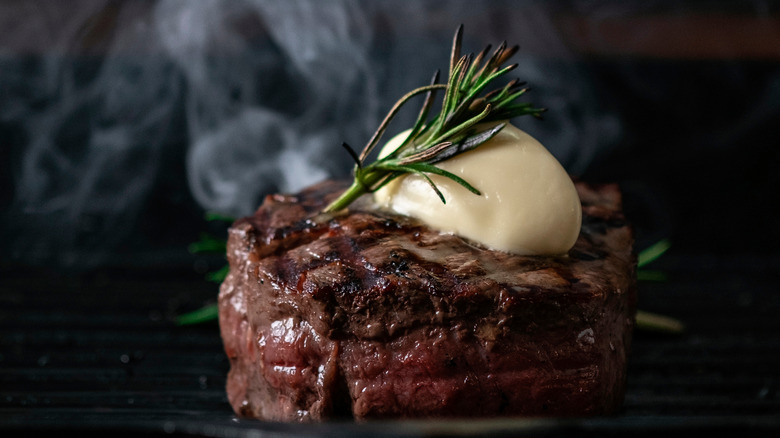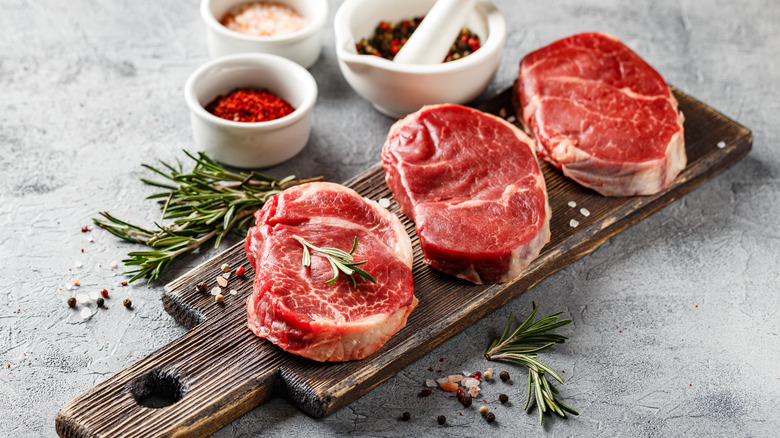The Real Reason Why Filet Mignon Is So Special
The filet mignon is a prime cut of beef, and if you haven't already given it a try, it's time that you do. Often paired with a side of potatoes (baked, mashed, or otherwise) and a serving of seasonal vegetables, these steak medallions are a gastronomic experience. With a reputation for being one of the most expensive steaks, the real reason why filet mignon is so special might surprise you.
With an obvious beefy flavor, filet mignon also has a somewhat sweeter profile that makes the steak feel all the more refined and regal. Of course, the fact that the steak has a French name can also add to the air of class. But, can we owe the filet to the French? According to Yo Ranch Steakhouse, while the filet mignon translates to dainty or tender filet, the name can actually be credited to American writer O. Henry, who made mention of the luxurious steak in his book, "The Four Million". Interestingly, when shopping for filet mignon in France, cuts are instead usually labeled as chateaubriand or tournedos.
While the connotations to French culture and cuisine are often suspected to be the reason behind why filet mignon is so special, there's an answer that deals with how the meat is sourced.
Harder to source, higher in price
An undeniably tender cut from the narrower tip of the tenderloin, Omaha Steaks explains that filet mignon is prized not just for its melt-in-your-mouth texture, but also because it represents a mere 3% of the total animal. Since it's rarer to source, it often comes with a more expensive price tag than other cuts of steak like a tri-tip or chuck steak.
This luxurious tenderness, according to Golden Steer Steak Company, is the result of its location. Since the tenderloin is a muscle that bears no weight and remains relatively inactive, the meat is spared from becoming tough. That said, there also tends to be less marbling in medallions, which is why filets are sometimes wrapped in bacon as a means of adding a bit of fat and flavor.
Although cook times can vary depending on steak thickness, Kansas City Steaks explains that the best way to cook filet mignon is by giving it a sear on both sides before reducing the temperature as the steak cooks to an internal temperature of 130 degrees Fahrenheit, otherwise known as a perfect medium rare. Regardless of how well done you like your steak, make sure to let meat rest so those savory juices can be reabsorbed. Oh, and don't forget to add a pat of butter for extra flavor like they do at steakhouses!

